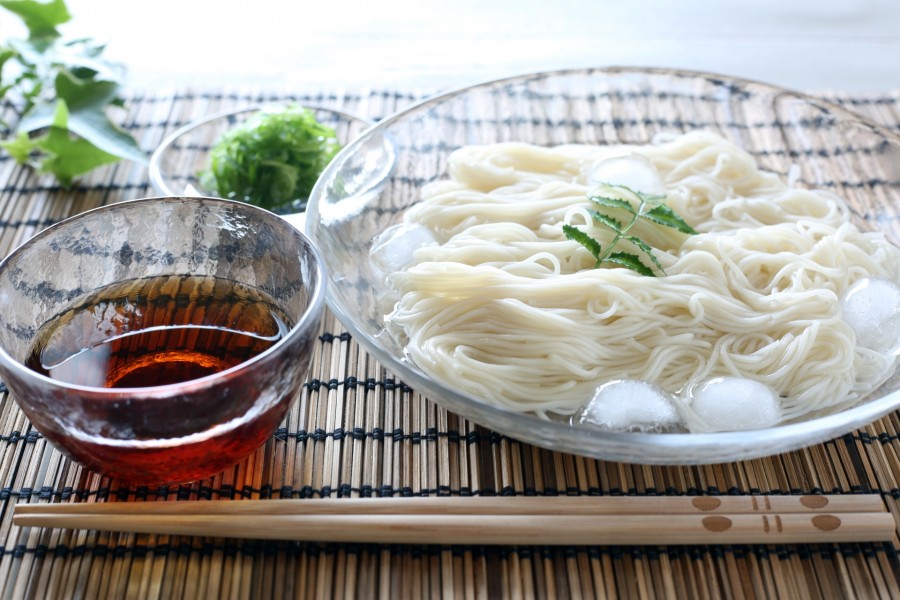Contents:
- What are Somen Noodles?
- Types of Somen Noodles
- Pre-made Dipping Sauce
- How to Enjoy Somen Noodles?
- Yaki (Pan-Fried) Somen Recipe
- Somen Salad Recipe
- Hot Somen Noodles Recipe
- Eggplant Somen Noodles Recipe
What are Somen Noodles?
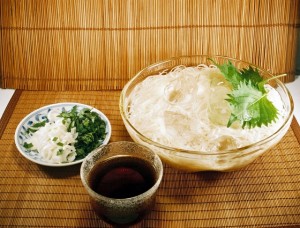 Who wouldn’t want a bowl of somen (Japanese white vermicelli noodles) on a hot summer day? Boil a generous amount of somen noodles and put them on a glass plate. Then place several pieces of ice on top. Prepare your favorite dipping sauce and condiments such as chopped ginger and green onion, and your meal is ready. Cool somen whets your appetite even in the heat of the summer, so be sure to prepare a good amount. Somen noodles are slender, so don’t cook them too long. Cooking takes only about a minute and-a-half to two minutes. Boil plenty of water on high heat in the largest pot you have, and gradually drop in the noodles. Slowly stir the noodles for a while to keep them separated. When the water boils again, reduce the heat to prevent the pot from bubbling over. After that, the somen is ready almost immediately. Quickly transfer the noodles to a colander. Wash them gently with a massaging motion under cold running water to remove the sliminess and enhance the flavor. We love somen because it’s so easy to cook.
Who wouldn’t want a bowl of somen (Japanese white vermicelli noodles) on a hot summer day? Boil a generous amount of somen noodles and put them on a glass plate. Then place several pieces of ice on top. Prepare your favorite dipping sauce and condiments such as chopped ginger and green onion, and your meal is ready. Cool somen whets your appetite even in the heat of the summer, so be sure to prepare a good amount. Somen noodles are slender, so don’t cook them too long. Cooking takes only about a minute and-a-half to two minutes. Boil plenty of water on high heat in the largest pot you have, and gradually drop in the noodles. Slowly stir the noodles for a while to keep them separated. When the water boils again, reduce the heat to prevent the pot from bubbling over. After that, the somen is ready almost immediately. Quickly transfer the noodles to a colander. Wash them gently with a massaging motion under cold running water to remove the sliminess and enhance the flavor. We love somen because it’s so easy to cook.
The History of Somen
When did we start eating somen noodles? One theory is that a snack brought from China in the Nara period (710 – 794) was the origin of somen. It was made by kneading flour and rice powder with water and salt and forming into dough into the rope shapes and then drying them. The dough was then steamed or boiled and eaten with soy sauce, miso (fermented soybean paste), vinegar, etc. It was also fried in oil and eaten as a sweet treat. The fried ropes look like the twisted donuts in the U.S., so we can’t help but think that some shapes have a timeless, universal appeal.
Incidentally, this snack (called Sakubei) was eaten on the annual Tanabata Festival day (when, legend says, two stars in the Milky Way, Vega and Altair, rendezvous). The custom apparently continued after the dessert became what we now know as somen, because Japanese still eat somen on Tanabata out of respect for Princess Vega.
Reportedly the original snack fell out of favor because the dough was too soft and difficult to cook compared to somen as we now know it or udon (thick white noodles) and didn’t keep long enough as dry noodles. During the Kamakura period (1185 – 1333), noodles made through a completely different method arrived from China. They were made from only the finest flour and milled by a machine. Vegetable oil was also used to keep the noodles from drying as the dough was stretched many times into long, slender noodles. The noodles, held together by a network of gluten, were firm and retained their shape after cooking in boiling water. In the Muromachi era (1336-1573), quality somen noodles were made using a better method and tools; these noodles remain popular today.
Making Somen Noodles
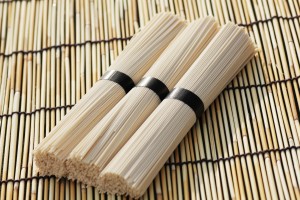 Somen is a product of three simple ingredients: flour, salt and water. Flour is kneaded with salted water to make a noodle dough. The well-kneaded noodle dough is flattened and stretched using a rolling pin or by stepping on it, after which the dough is cut to around 1.7 inches thick and twisted into a rope shape and then looped in a tub. Next, the dough ropes are pulled from the tub and put on a plate, brushed with vegetable oil, then returned to the tub. The dough is then aged in the covered tub.
Somen is a product of three simple ingredients: flour, salt and water. Flour is kneaded with salted water to make a noodle dough. The well-kneaded noodle dough is flattened and stretched using a rolling pin or by stepping on it, after which the dough is cut to around 1.7 inches thick and twisted into a rope shape and then looped in a tub. Next, the dough ropes are pulled from the tub and put on a plate, brushed with vegetable oil, then returned to the tub. The dough is then aged in the covered tub.
Somen Noodles Curtain
The aged noodles are placed on a stretching tool and stretched thinner. The thinner noodles are then looped around two bars in a figure-eight shape. These twisted noodles are aged again, and then they’re gently pulled and stretched. This aging and stretching process, which makes the noodles firm and chewy, is implemented slowly or repeated multiple times to achieve the finest taste.
 The aging process is followed by drying in the sun. The noodles are hung from a drying machine that looks like washing poles more than 6.6 feet high. Chopstick-like bars separate the noodles to prevent them from sticking together as they dry. In this process, experience and technique with an understanding of the weather and wind direction of the day are needed in order to dry the noodles evenly. The fully dry noodles are then cut with a knife and divided into serving bundles, which are then wrapped in strips of paper. The somen noodles made by this time-honored method–which is still used today—are called tenobe somen (handmade somen noodles).
The aging process is followed by drying in the sun. The noodles are hung from a drying machine that looks like washing poles more than 6.6 feet high. Chopstick-like bars separate the noodles to prevent them from sticking together as they dry. In this process, experience and technique with an understanding of the weather and wind direction of the day are needed in order to dry the noodles evenly. The fully dry noodles are then cut with a knife and divided into serving bundles, which are then wrapped in strips of paper. The somen noodles made by this time-honored method–which is still used today—are called tenobe somen (handmade somen noodles).
Difference between Somen and Hiyamugi
Incidentally, do you know there is a difference between somen and hiyamugi which are often considered the same thing? They appear to be identical, having the same shape and same color, but the two are actually very different in terms of their histories and production methods.
Hiyamugi is made roughly the same way as udon. Flour dough is rolled with a rolling pin and cut with a knife. Unlike somen , hiyamugi isn’t coated with oil or dried in the sun. Evidently, hiyamugi is a cousin of udon but not of somen.
The current JAS (Japanese Agricultural Standard) standard in Japan differentiates “somen,” “hiyamugi” and “udon” by thickness alone. Specifically, noodles less than 0.05 inches thick are called somen, those 0.05 inches to less than 0.07 inches thick are called hiyamugi, and those 0.07 inches thick or thicker are called udon. This classification is probably a way to accommodate variations, such as local variants of somen that are made without oil and udon that are stretched by hand. Moreover, some manufacturers have mixed noodles of pink, green, and other colors into hiyamugi to differentiate them from somen, although this practice is somewhat rare nowadays. Today, colored somen noodles are occasionally mixed into white ones to make them attractive for children.
Some is a Perfect High-nutrition Food
Different production methods lead to different tastes, textures in the mouth, and nutritional values. The process of coating the noodles with vegetable oil and twisting them generates a wheat protein called gluten. To make slender noodles without using a machine, handmade somen noodles are “twisted” many times.
This is why handmade somen is an excellent source of gluten. In fact, somen has more calorific value and contains more protein and sugar than udon or hiyamugi. In addition to being cooling and tasty, somen is a perfect high-nutrition food that saves us from the lethargy of summer heat. It’s another example of the wisdom behind Japanese food–cuisine that is known for selecting the freshest ingredients in season or materials appropriate for different times of the year.
Types of Somen Noodles
#1 Somen Brand from Harima (Hyogo Prefecture), Ibonoito
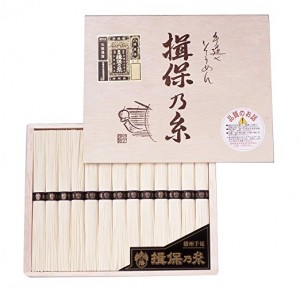
It is worth mentioning that the Cooperative requested that the title of “Handmade Somen Technician” be recognized as a national credential. The request was approved in 1993. This is understandable, because somen production requires expert skills.
Thereafter, handmade somen manufacturers throughout Japan began labeling their products with the names of their Handmade Somen Technicians. Consumers can now put a face on each package of somen, and they can clearly see whether the somen noodles are handmade or machine-produced.
The Origin of Somen, Miwa (Nara Prefecture)
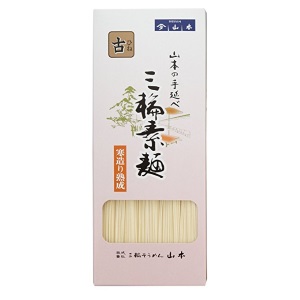
Somen by Region
A less renowned contributor to the popularity of Miwa somen is the variety from Shimabara, mainly from Shimabara City, Nagasaki Prefecture. Shimabara is a little-known somen- producing region that has a long history of producing Miwa somen. That’s why the handmade somen noodles from Shimabara are of high, stable quality but are priced affordably. Nijiya Market carries “Yamada no Shimabara Tenobe Somen,” one such somen brand from Shimabara. This premium somen product is made from an original powder mix jointly developed with a local flour mill and using the clear spring water and the choicest salt of Shimabara. The noodles are made with the craftsmanship and careful attention of Toshio Jingawa, a “Modem Master Craftsman” recognized by numerous awards including the Nagasaki Governor’s Award. Be sure to try these doughy, chewy noodles that don’t become soft after cooking.
The Third Largest Somen-Producing Region, Shodoshima (Kawaga Prefecture)
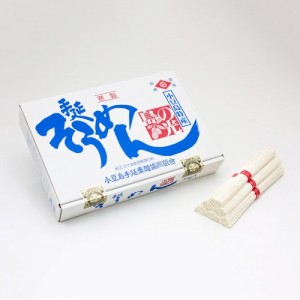
What is Nagashi Somen?

Nijiya sells a premium somen sauce made in Tosenkyo, one of the leading nagashi somen regions in Kagoshima, as well as Murasaki-imo somen made with murasaki-imo (purple potato). Enjoy the authentic taste of nagashi somen right here in America.
Pre-made Dipping Sauce
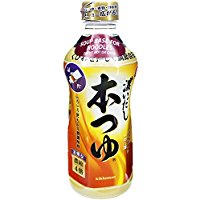
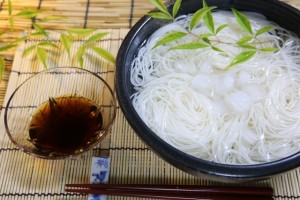
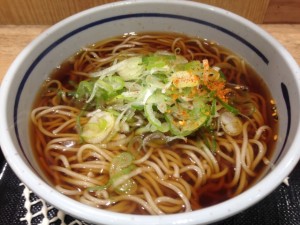
Look for men-tsuyu or noodle soup bases in your local Asian market or the Asian section at the local supermarket. Once you understand how to use it, you can make restaurant grade Japanese food at your home. The pre-made somen noodles dipping sauce is a must have item for every house hold!
How to Enjoy Somen Noodles?
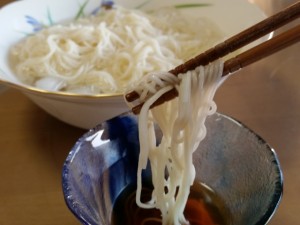 You need a tasty somen sauce to enjoy somen. Somen sauce is basically made from bonito stock, but it differs from regular noodle sauces in several ways. Because somen noodles are slender and easily hold a sauce, somen sauce is made less salty. Water in which dried shiitake mushrooms have been soaked adds a great flavor to somen sauce. It’s also a good idea to add slices of shiitake stewed in soy sauce and sugar. The umami of shiitake comes from guanylic acid, which, when combined with inosinic acid, enhances sweetness. Cooking dried shiitake mushrooms takes time, but it’s worth the effort.
You need a tasty somen sauce to enjoy somen. Somen sauce is basically made from bonito stock, but it differs from regular noodle sauces in several ways. Because somen noodles are slender and easily hold a sauce, somen sauce is made less salty. Water in which dried shiitake mushrooms have been soaked adds a great flavor to somen sauce. It’s also a good idea to add slices of shiitake stewed in soy sauce and sugar. The umami of shiitake comes from guanylic acid, which, when combined with inosinic acid, enhances sweetness. Cooking dried shiitake mushrooms takes time, but it’s worth the effort.
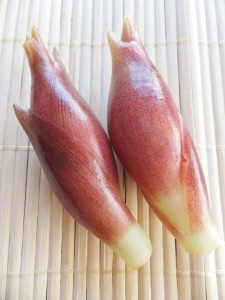
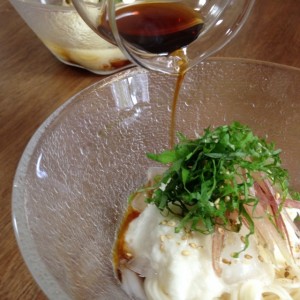 Gooey foods are popular these days due to claims of their healthful benefits, and they go perfectly with somen too. Mix grated yama-imo (Japanese yam) and sliced okra, and place them in the somen sauce. You’ll soon become addicted to the gooey texture that bursts in your mouth. Also, mixing in natto (fermented soybeans) or tororo kombu (kelp flakes) enhances flavor and boosts the nutritional value of a somen meal. Another interesting idea is to mix chopped leaves of molokhia, which is in season during the summer. Molokhia is rich in vitamins and is said to lower blood pressure. For those of you who love spicy foods, kimchi is a must-have with somen. The spicy pickled vegetables turn somen into reimen-like noodles (Korean noodle dish). Red chili pepper in kimchi makes you perspire and therefore cools your body, which is what you need on a hot day. Add shishito (grilled green peppers) or wasabi (Japanese horseradish) for a delicious accent. If you want to make a filling meal for growing children or young adults with good appetites, add sliced ham or cooked chicken breast.
Gooey foods are popular these days due to claims of their healthful benefits, and they go perfectly with somen too. Mix grated yama-imo (Japanese yam) and sliced okra, and place them in the somen sauce. You’ll soon become addicted to the gooey texture that bursts in your mouth. Also, mixing in natto (fermented soybeans) or tororo kombu (kelp flakes) enhances flavor and boosts the nutritional value of a somen meal. Another interesting idea is to mix chopped leaves of molokhia, which is in season during the summer. Molokhia is rich in vitamins and is said to lower blood pressure. For those of you who love spicy foods, kimchi is a must-have with somen. The spicy pickled vegetables turn somen into reimen-like noodles (Korean noodle dish). Red chili pepper in kimchi makes you perspire and therefore cools your body, which is what you need on a hot day. Add shishito (grilled green peppers) or wasabi (Japanese horseradish) for a delicious accent. If you want to make a filling meal for growing children or young adults with good appetites, add sliced ham or cooked chicken breast.
A fun aspect of eating somen is that you can enjoy it with many different condiments you’re limited only by your imagination! It looks like we’ll have another hot summer this year. Why not prevent fatigue from the summer heat by eating delicious somen?
Somen noodles make a delicious meal, with only sauce and condiments, but here are some alternative recipes you can try for a change. A tip is to cook the noodles al dente. Explore different recipes to make eating somen more fun!
How to cook Somen? (Somen Noodles Recipe)
Yaki (Pan-Fried) Somen Recipe
Fried somen is also good snack for kieds!

Ingredients (Serves 2)
- 2 bundles somen
- 1.8 oz. minced pork
- Handful of arugula 2 eggs
- 1″ piece of ginger
- Pepper to taste
- Vegetable oil as needed
- 0.4 oz. shio-kombu (strips of kelp cooked in soy sauce and dried) (thinly sliced)
Cooking Directions
- Cook somen noodles al dente, wash them under running water, and drain. Julienne the ginger.
- Heat vegetable oil in a frying pan, and scramble the eggs. Remove from heat and set aside.
- Add a little more vegetable oil to the pan and cook the ginger and minced pork. Add somen and arugula and cook together.
- Return the eggs to the pan and cook all the ingredients while shaking the pan.
- Mix in shio-kombu and sprinkle with pepper to finish. Taste.
Somen Salad Recipe (Thai-style)

Ingredients (Serves 2)
- 2 bundles somen
- 4.2 oz. peeled shrimp
- 1/2 purple onion
- 2 bunches cilantro
- 1 green onion
[Thai somen sauce]
- 2/5 cup shiro-dashi (soup stock using white soy sauce)
- 1/8 cup Thai fish sauce
- 2/5 cup water
- 1 Tbsp. lemon juice
- 1 Tbsp. sesame oil
- 1/2 tsp. grated garlic
Cooking Directions
- Cook somen noodles al dente, wash them under running water, and drain.
- Boil shrimp for about 3 minutes and drain in a colander.
- Slice purple onion, cut cilantro to 1-inch segments, and finely chops green onion.
- Mix all the ingredients of Thai somen sauce in a bowl, add 1., 2. and 3., and mix together.
- Serve on a plate and sprinkle with red chili pepper to taste.
Hot Somen Noodles Recipe
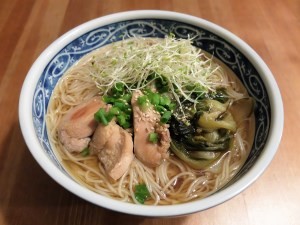 Hot somen noodles are great for cold winter days or when you just want to have something simple and light. With the help of a premade soup base, you will have a hot somen in 10 minutes!
Hot somen noodles are great for cold winter days or when you just want to have something simple and light. With the help of a premade soup base, you will have a hot somen in 10 minutes!
Ingredients (Serves 2)
- 2-4 bundles somen noodles
- 1 lb. chicken fillet
- 4 bok choi leaves (Chinese cabbage)
- 1 cup alfalfa sprout
- 2 Tbsp. soy sauce
- 1 Tbsp. agave or honey
- 1/4 cup chopped green onion
- 1/2 cup water
- 1 Tbsp. roasted sesame seeds (optional)
Cooking Directions
- Cut chicken in bite-size and marinate it with soy sauce and agave.
- Chop green onion finely, and bok choi in quarters and set aside.
- Place the chicken fillet in a pan along with the marinating sauce (soy sauce and agave), add 2 cups of water and cover with lid.
- Once it comes to boil, turn the heat down and simmer for 5 minutes until chicken is cooked.
- Then add bok choy and cook for 1 more minute.
- Boil water and the cook somen noodles for a few minutes as per directions.
- Drain, wash noodles under cold water and set aside.
- Put premade somen noodles sauce in the bowl and add hot water as per directions.
- Put noodles in the bowl, and top it with chicken, bok choy and alfalfa sprouts.
- Sprinkle sesame seeds and green onion for garnish.
Eggplant Somen Noodles Recipe
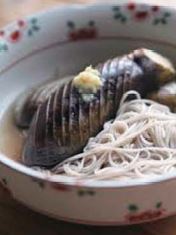
Ingredients (Serves 1)
- 1 Japanese eggplant
- 3-3/4 oz. somen noodles
- A small amount of ginger root
Dashi broth for somen:
- 17 fl.oz. shiro-dashi stock
- 3.4 fl.oz. mirin (Japanese sweet cooking rice wine)
- 3.4 fl.oz. dark soy sauce
- 1.7 fl.oz. cooking sake (Japanese rice wine)
Cooking Directions
- Cut the eggplant in half and make shallow cuts in the skin.
- In a saucepan, combine all the ingredients for dashi broth and bring to a boil.
- Lightly deep-fry 1) and leave in the broth 2) (about 5 minutes). Set aside in a separate plate.
- Cook the somen noodles in plenty of water they are about 70% done, still al dente. Strain the noodles and simmer in the soup 2) to let the flavor seep into the noodles.
- Arrange the eggplant and noodles in a bowl and serve.
Somen noodles simmered with eggplants are a typical home-cooked dish eaten during the summer in Kanazawa City, Ishikawa Prefecture. The dish is delicious served hot or cold. Sometimes it’s flavored with miso, or cooked according to family-owned recipes. As the somen noodles absorb the liquid, the key is to use a fair amount of dashi broth.
